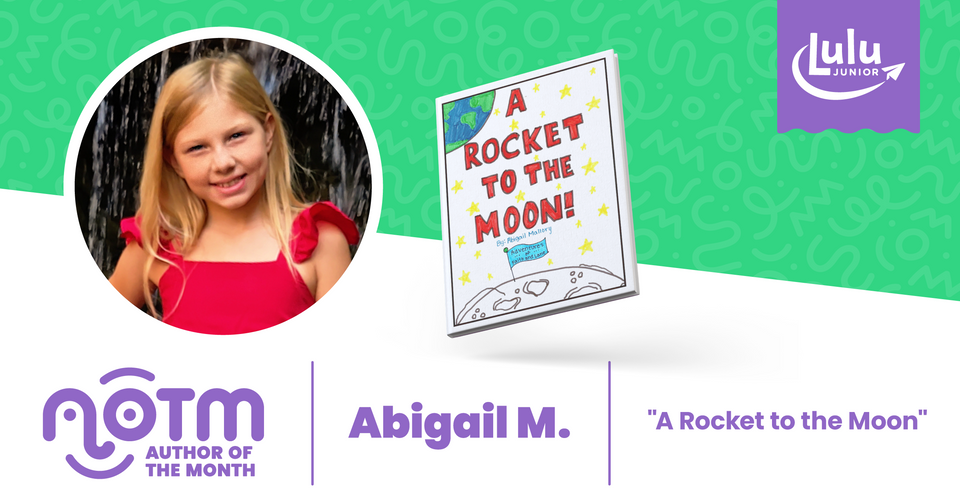
6 Ways To Inspire Reluctant Writers
We all know just how important literacy is for everyone. Introducing reading and writing at an early age creates a solid foundation your kids will rely on for their whole lives. What, then, do you do about reluctant writers?
Transitioning from an interest in reading and stories to spelling and writing can be hard for a number of reasons. Books full of pictures are fun to read. Sitting at a desk with pen and paper may seem like a lot less fun for your kids.
That’s why we’ve got 6 ways to help inspire and excite your most reluctant writer!
Why Writing Matters
Teaching kids to read and write are among the most vital skills we can impart. Literacy impacts us every day, from reading and composing text messages to fiction and nonfiction stories that enrich our lives. This is why it is critical that kids learn how to read and write.
Special emphasis on the writing today because I think it’s often underappreciated. Reading comes first and is the exciting and fun part. Writing, from my own education, was something taught at school and not at home. But that’s not the way it should be.
Because writing is just so key. Writing skills are a necessity; think how many times a day you write. Even if it’s a challenge, helping your kids learn to write and build good writing habits will pay dividends for the rest of their lives.
Inspiring Reluctant Writers
Some kids take to writing; shaping words with a pen or pencil, creating stories, or pairing drawings with descriptions. Other children struggle to focus, handle their writing tools, or come up with stories. For those kids who are learning to read but struggling to write, these tips can help inspire them.
1. Create Writing Goals
Writing goals give your kids purpose while they write, helping them see the reason for writing. The best way to set a writing goal is to use their favorite toy or cartoon character. Ask them to create a story about this character.
It may not seem like it, but simply asking “what if _____ did _____?” creates a goal; to finish the story, to answer the question. To bring life to their favorite character. I use these kinds of goals in my own writing all the time. Say I have a secondary character with a minimal back story; I might write a short story about this character so I can better understand them.
Another way to create goals is to ask for “X words about _____.” It doesn’t need to be hard, something like “tell me 5 things about that tree” will do. The idea is they have a goal (to describe the tree) and a defined quantity (5 things) to aim for.
Goals help your kids gamify their writing making it fun to write!
2. Gamify Writing
Gamification is the practice of adding game elements to non-gaming activities. Basically, we like having measurable goals and we like collecting things. Gamification most often takes the form of small awards at different levels of achievement or participation. Starbucks awards ‘stars’ when you buy their coffees and food. Earn enough stars and you get a free drink!
And just like that, Starbucks gamified buying coffee.

You can use the same principle to make writing a game. Perhaps they get a star for every page they fill and enough stars earn a bigger prize. Or a chart that paths their writing from individual sessions to something longer (like a book?) that your kids color in when they finish their writing session.
The game doesn’t need to be complicated. Reluctant writers are shying away from the challenge of writing. The game element should help distract them from those challenges and focus on the fun of writing.
3. Separate Writing From School Work
Undoubtedly, your kids will be expected to write for their school work. The association of writing (and reading to a degree) with work is one of the more difficult parts of their education to overcome. We have to separate writing and working for these reluctant writers.
If your child groans or complains about their written assignments for school, it’s even more important to make writing fun.

One cool solution might be to stop writing! You could voice record their story and write it out for them or let them dictate the story while you write it. In this scenario, you’re doing the writing, but you’re displaying the value it has (preserving their story) and how easy it is once you’re good at it.
Another way to separate writing from school work is to simply write somewhere else. If your kids are doing school work at the kitchen table, go outside in the backyard to write a fun story about the birds flying about.
4. Prompt Reluctant Writers
You can’t help them want to write if your kids don’t have any ideas to write about! While we know kids can often string imaginative stories together with ease, sitting in front of a blank page can be daunting.
That’s why writing prompts are great! You can use prompts to kickstart a writing session or to help them avoid burnout if they’re struggling with a writing project.
In fact, I think it’s a great practice for anyone who writes for pleasure to start their writing session with 5-10 minutes of prompted writing. Think about how athletes warm-up before the big game. Same idea for writers.
So using writing prompts with your young writer can help them get excited about writing and instill a valuable writing practice.

5. Process Beats Speed And Accuracy
Don’t let your kids read this next bit, okay?
Writing is work.
Your kid may not have any interest in ‘being a writer’ but they’ll still need to learn how to form their thoughts into written words, right? Ask any author and they’ll tell you that writing is difficult work.
Just because writing is hard, doesn’t mean it’s not worth doing. The best way to approach writing is to build a process. This process might be different for the kind of writing (an essay might demand planning and revision, a text message probably just needs to be read once to ensure no autocorrect blunders). What’s important is that you foster your kids as they build a writing process.
Practically, this means writing should be about taking the time and articulating their thoughts. Avoid goals like ‘writing a page in 10 minutes’ that quantify their work with a time constraint. Goals should focus on what they create, like ‘write as much about _____ as you can in 10 minutes.’ Journaling is a perfect example of a way to build a writing habit and avoid goals that limit or constrict creativity.
Similarly, be careful about correcting spelling while they write. Stopping the flow of words might be hard to get started again. It’s often better to keep spelling and grammar a separate lesson—though it is a good way to use their past writing to highlight errors and correct mistakes.
6. Develop Fine Motor Skills
Less obvious, but your kids have to develop muscle control and coordination between their fingers and eyes to write. Just like any exercise, it takes practice and effort. Fortunately, they’ll be working on fine motor skills all day; from turning doorknobs to pointing at a book they want for storytime.
But if your child is struggling to get excited about writing, you might instead (or in conjunction with writing time) practice some fine motor skills. Michelle Caskey has this terrific and thorough list of ways to practice and develop motor skills in kids. Highly recommended if your kids are complaining of achy hands or are having a hard time forming letters on the page.
Remember, It Takes Time
Reading and writing are lifelong skills. Even as adults, we continually become better readers and writers (hopefully). Think of the last time you learned a new word or realized you’d been mispronouncing a word you’d previously only seen written.
When you’re teaching your kids to read and write, it’s not a rote skill like memorizing historical dates. You’re also teaching them the value of reading and writing along with the understanding that we’ll always be growing and improving how we communicate.






